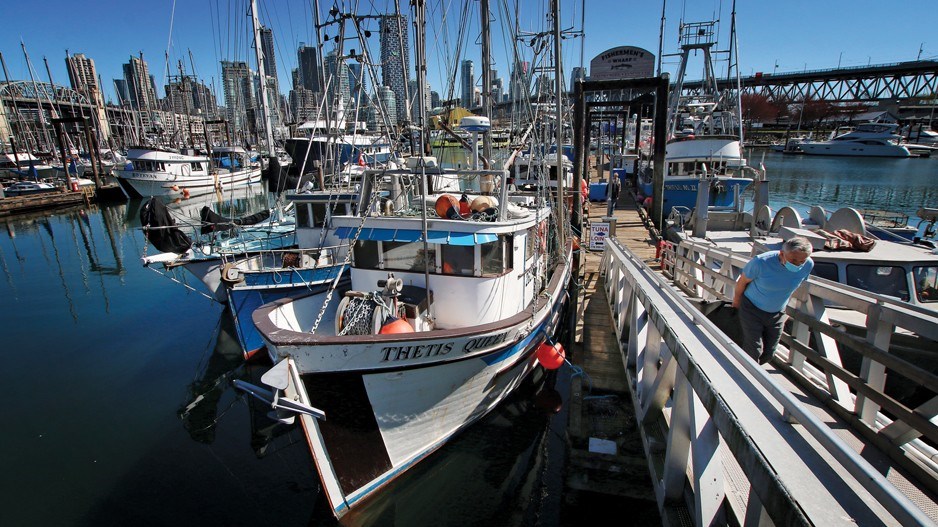Everyone by now knows what is meant by the “green economy.”
But what about that “blue economy” that the World Bank and the Justin Trudeau government have been talking about lately?
The World Bank defines the blue economy as “sustainable use of ocean resources for economic growth.”
The global ocean economy is worth an estimated US$1.5 trillion now and is expected to grow to US$3 trillion by 2030, according to Rashid Sumaila, University of British Columbia professor at the Institute for the Oceans and Fisheries.
Given that Canada’s coastline borders on three oceans and it is the country with the longest marine coastline, Canada’s oceans are an underused resource with significant economic potential in seafood production, tourism and renewable offshore wind and tidal energy generation.
The Trudeau government wants to develop a blue economy strategy, but isn’t clear on what that strategy should include, which is why it is seeking input from Canadians through its blue economy engagement process.
“Combined, our ocean industries generate over $30 billion a year in GDP,” federal Fisheries and Oceans Minister Bernadette Jordan said last week at a virtual forum on the blue economy hosted by the Greater Vancouver Board of Trade (GVBOT). “Yet our blue economy lags behind other countries like Norway, the U.S., the UK and Australia. To me that screams potential.”
But if Canada’s blue economy is to include aquaculture, it is off to a rocky start in B.C. Jordan is shutting down a quarter of the province’s salmon farms with her order to have 19 open-net sites in the Discovery Islands off the water by 2022.
A good start for a blue economy strategy would be a federal aquaculture act, said forum panellist Jennifer Woodland, CEO of Nuu-chah-nutlh Seafood and chairwoman of the Canadian Aquaculture Industry Alliance.
Nuu-chah-nulth Seafood is a First Nations company involved in commercial fishing, salmon farming, seafood canning and, more recently, seaweed cultivation.
“Aquaculture is one of the fastest growing sectors in world,” Woodland said, “and we’re watching every other jurisdiction take their place globally as aquaculture leaders. Canada should be a leader in sustainable aquaculture development.”
For B.C., the biggest blue economy opportunities are in sport fishing, whale watching, cruise ships, kayaking, aquaculture and commercial fishing.
But both its saltwater sport fishing and commercial salmon fisheries are in trouble, due to declining wild stocks, and salmon farming is in trouble due to activism and bad optics.
B.C.’s commercial sockeye fishery has been in decline since the mid-1990s. Compared with Alaska, Russia and Japan, B.C.’s commercial salmon fishery has all but vanished.
“The salmon fishery and fishermen and processors are close to collapsing,” said Joy Thorkelson, former president of the UFAWU-Unifor fisherman’s union in B.C. In 2019, the commercial catch for salmon in B.C. was the lowest in 70 years, she said.
Declining chinook stocks, meanwhile, have resulted in so many restrictions and closures that American tourists who pay big bucks to fish in B.C. may eventually stop coming.
Some efforts are being made to address the wild salmon decline. Under the joint federal-B.C. Salmon Restoration and Innovation Fund, $142 million is being invested over five years in initiatives like salmon habitat restoration.
Mike Meneer, president of Pacific Salmon Foundation, said past salmon habitat restoration and enhancement efforts have had some success in bolstering coho stocks.
While rebuilding Pacific salmon stocks would be an important part of a blue economy plan, if warming ocean temperatures from climate change are the principal cause of the declines, habitat restoration may not be enough to reverse it.
Unlike Atlantic cod, Pacific salmon are more abundant now than they ever have been. But that abundance is concentrated in cold northern regions, like Alaska and Russia. Northern range abundance may also be partly attributed to industrial-scale hatcheries in Alaska, Japan and Russia, which pump more than one billion juvenile salmon into the Pacific Ocean each year.
One question Jordan may need to wrestle with as part of her blue economy discussion is whether Canada should follow Alaska’s lead and move from salmon farming to salmon ranching by increasing Fraser River sockeye stocks with industrial-level hatchery production.
And if the federal government is determined to shut down coastal open-net salmon farms in B.C., subsidizing a transition to open ocean fish farms may be less risky than betting on land-based closed containment recirculating aquaculture systems (RAS).
Jordan’s own Fisheries and Oceans advisers have determined RAS to be expensive and not economically viability.
“While closed containment appears to solve many of the current problems that represent impediments to net-pen farming in coastal waters, nearly 100% of the startups using this technique have gone bankrupt,” a 2018 Fisheries and Oceans memo to the fisheries minister noted.
Open-ocean farming may prove a viable alternative.
SalMar, a Norwegian salmon farming company, has developed the first offshore fish farm, away from the coast, which reduces the chance of wild and farmed fish interacting.
The company has now produced two harvests of Atlantic salmon and reports low sea-lice levels and low mortalities.
As for other forms of aquaculture, one relatively new crop for B.C. is seaweed and kelp. Ocean Regenerative Aquaculture is planning to cultivate seaweed for products such as biostimulants, which can be used in agriculture to improve crop growth. •




